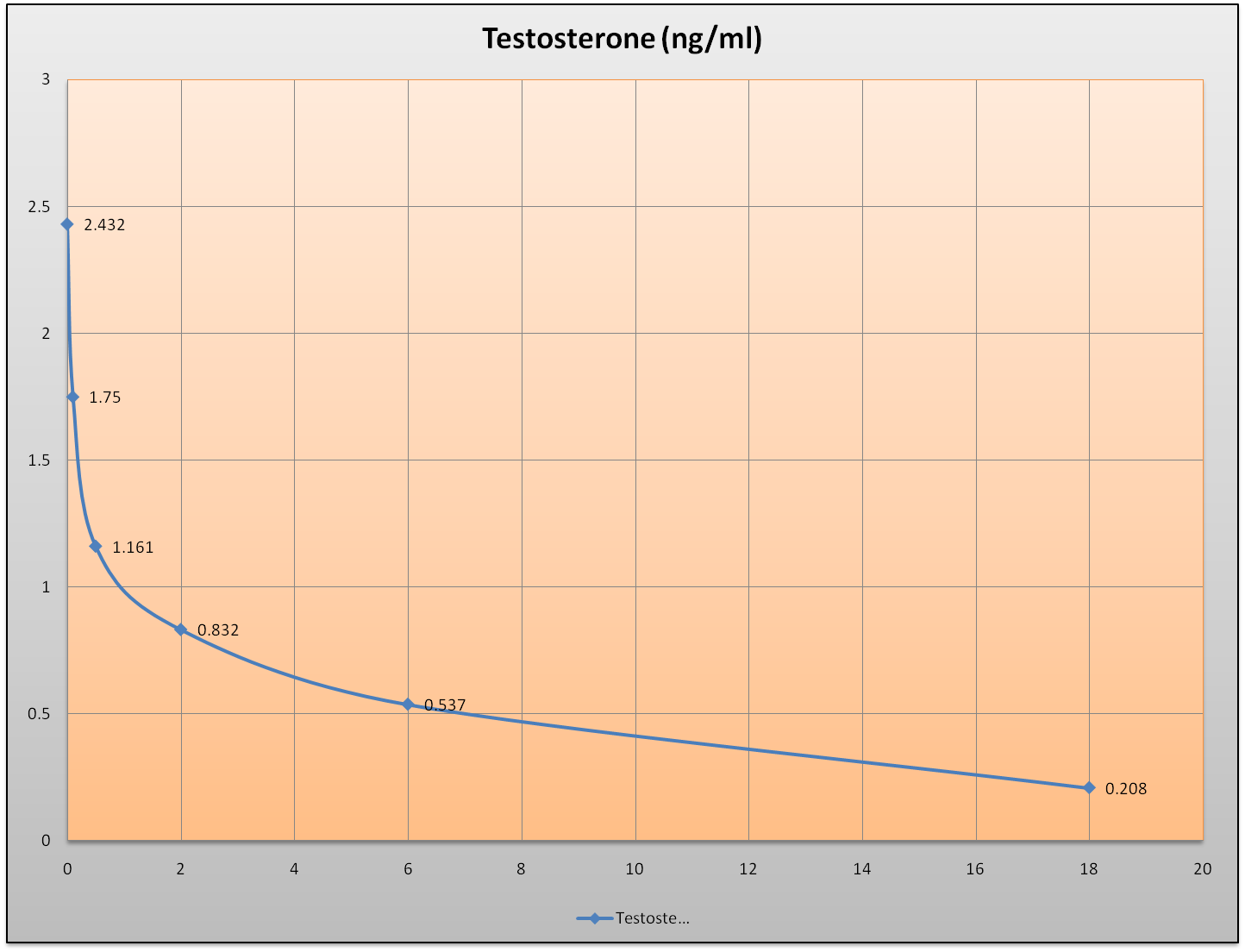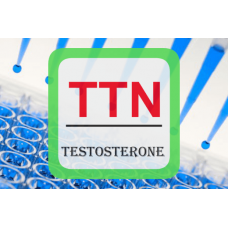Shopping Cart
0 item(s) - $0.00Testosterone ELISA
Availability: In Stock
Add to Compare
Enzyme Immunoassay for the Quantitative Determination of Testosterone Concentration in Human Serum
FOR RESEARCH USE ONLY. NOT FOR USE IN DIAGNOSTIC PROCEDURES
SUMMARY
Testosterone, a C19 steroid, is the most potent naturally secreted androgen. It is secreted by the Leydig cells of the testicles, the adrenals and the ovaries, and is the most important androgen secreted into the blood. In males, testosterone is secreted primarily by the Leydig cells of the testes; in females approximately 50% of circulating testosterone is derived from peripheral conversion of androstenedione, with the remainder from direct secretion of testosterone from the adrenal and ovarian glands.
In males, testosterone levels increase during the last trimester of fetal life due to placental and fetal pituitary gonadotropin stimulation, and then decline and increase again 30-60 days postnatally. After this, testosterone concentrations decline to low levels in childhood. At the onset of male puberty, gonadotrophin secretion leads to increased testicular production of testosterone. In adult men, serum testosterone levels show a circadian variation, with peak levels in the morning.
Testosterone is responsible for the development of secondary male sex characteristics and its measurements are helpful in evaluating hypogonadal states. In prepubertal males, elevated testosterone levels are found in both gonadotropin-dependant and independent precocious puberty (e.g. testotoxicosis, adrenal hyperplasia or adrenal tumor), as well as in androgen receptor defects. In adult males, high levels of testosterone are associated with hypothalamic pituitary unit diseases, testicular tumors, congenital adrenal hyperplasia and prostate cancer. Likewise, in adolescent and adult males, low testosterone levels are associated with various pathologic conditions, including primary hypogonadism (e.g. testicular dysgenesis, Klinefelter syndrome) and gonadotropin deficiencies (e.g. hypopituitarism, Kallman syndrome).
In women, there is a much smaller increase in serum testosterone levels during the third trimester, followed by low levels in childhood, and a small increase during puberty. In females of all ages, elevated testosterone levels can be associated with a variety of virilizing conditions, including congenital adrenal hyperplasia, arrhenoblastoma, mixed-gonadal dysgenesis, polycystic ovarian disease, and ovarian and adrenal tumors.
Testosterone measurements may also be utilized in women for the monitoring and adjustment of androgen suppressing drugs and dosages. Testosterone concentration in serum may be raised by certain drugs, such as 19 nortestosterone, epitestosterone, ethisterone and Danazol. Similarly, common oral contraceptive drugs, drugs containing cyprotarone acetate (CPA), and gonadotropin-releasing hormone (GnRH) analogues are very effective in the suppression of testosterone concentrations.
Testosterone measurement in the immediate postnatal period can aid in the differential diagnosis of ambiguous genitalia, while measurements before and after exogenous gonadotropin administration can help to detect cryptorchidism and other structural abnormalities.
The United Immunoassay Testosterone EIA provides a sensitive and reliable assay for the measurement of total testosterone in human serum. The kit features a standard range of 0.1 to 18 ng/ml and will determine a minimum detectable concentration of 0.06 ng/ml. The assay provides results in 2 hours in a microtiter plate format.
PRINCIPLE OF THE TEST
The Testosterone EIA is based on the principle of competitive binding between testosterone in the test specimen and testosterone-horseradish peroxidase (HRP) conjugate, for a constant amount of rabbit anti-testosterone. In the incubation, goat anti-rabbit IgG-coated wells are incubated with testosterone standards, controls, patient samples, testosterone-HRP conjugate reagent and rabbit anti-testosterone reagent for 90 minutes. During the incubation, a fixed amount of HRP-labeled testosterone competes with the testosterone in the standard, sample, or quality control serum for a fixed number of binding sites of the specific testosterone antibody. Thus, the amount of testosterone-HRP immunologically bound to the well progressively decreases as the concentration of testosterone in the specimen increases.
Unbound testosterone-peroxidase conjugate is then removed and the wells washed, followed by addition of TMB Reagent resulting in the development of blue color. The color development is stopped and the absorbance is measured spectrophotometrically at 450 nm. The intensity of the color formed is proportional to the amount of enzyme present and is inversely related to the amount of unlabeled testosterone in the sample. A standard curve is obtained by plotting the concentration of the standard versus the absorbance. The testosterone concentration of the specimens and controls run concurrently with the standards can be calculated from the standard curve.
EXAMPLE OF STANDARD CURVE
Results of a typical standard run with optical density readings at
450 nm shown in the Y axis against Testosterone concentrations shown in the X axis. This standard curve is for the purpose of illustration only, and should not be used to calculate unknowns. Each user should obtain his or her own data and standard curve.

| General | |
| ANALYTE GROUP | Testosterone |
| GROUPING | Hormones:Reproduction |
| PRODUCT NAME | ELISA |
| STORAGE | Store the kit at 2-8°C |
| COUNTRY OF ORIGIN | USA |
| DISCOUNTS | Bulk Packaging; High Volume |
| ELISA | |
| TESTS PER KIT | 96 (12 x 8) |
| CALIBRATION RANGE | 0 - 18 ng/mL (Recommended) |
United Immunoassay, Inc. © 2025


































